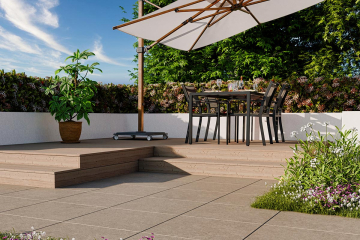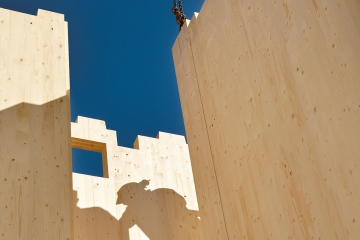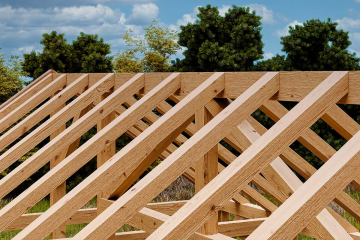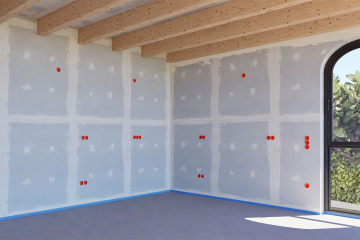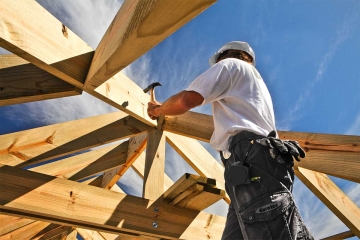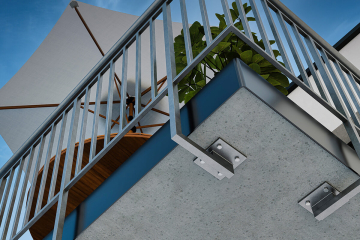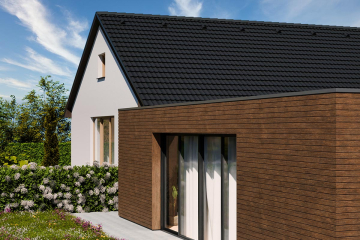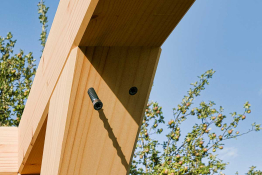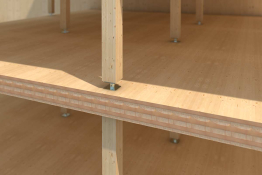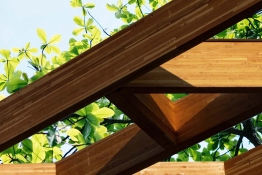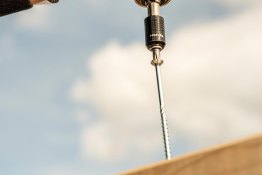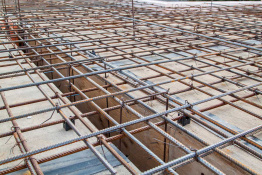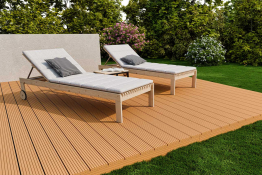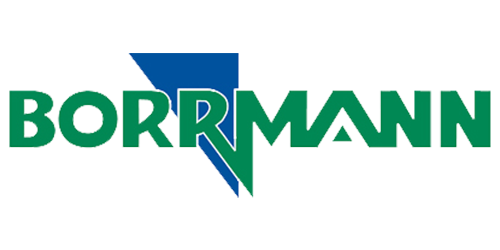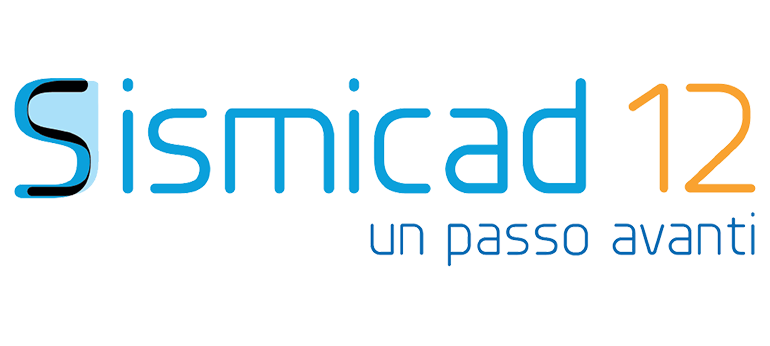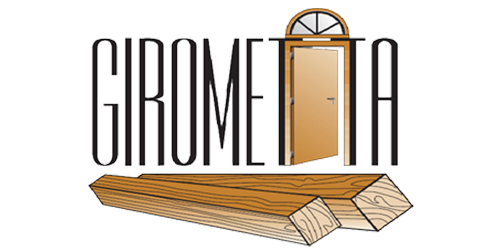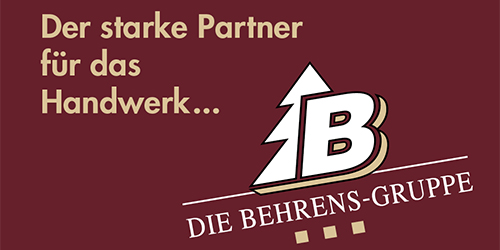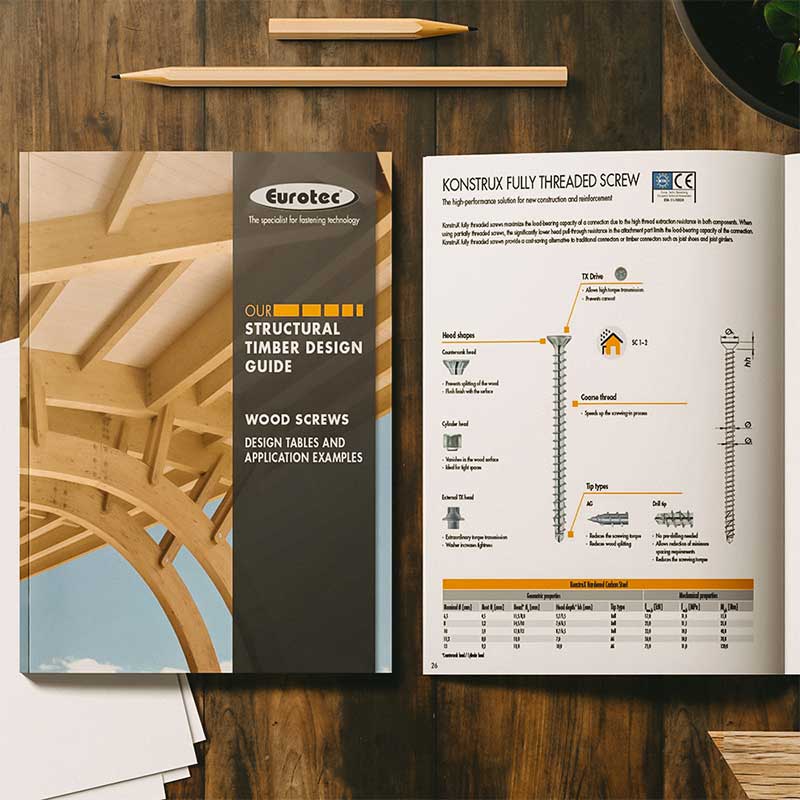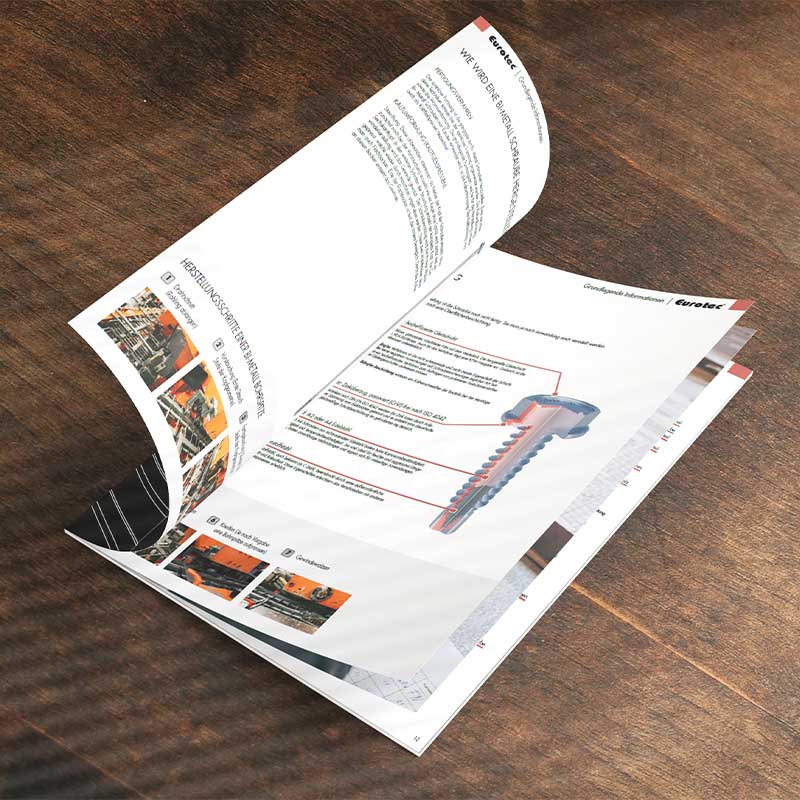Sustainable construction with strong connectors, part 2
Sustainable construction with strong connectors, part 2
The KonstruX fully-threaded screw was used as a connector to maximise the load-bearing capacities in structural elements. This screw boasts both a high thread removal resistance and high tensile strength. If partially threaded screws are used, on the other hand, the joint’s load-bearing capacity is limited by the considerably lower characteristic yield strength in the attached part. For this reason, the fully-threaded screw was designed by Eurotec, which represents an advantageous alternative to traditional connections or wood connectors (e.g. joist hangers).
The applications of KonstruX fully threaded screws, with cylinder head or with countersunk head, range from main beam and secondary beam connections and reinforcement supports, tensile load and beam doubling to transverse tension in hall girders. As the beams are doubled, the load-bearing capacity of the ceiling beams is increased enormously while sagging is reduced. The elements involved are therefore connected in a displacement-resistant way. Thanks to the special thread-to-shaft ratio and the newly developed drill point, the edge and centre distances required by ETA can be minimised.
For the precise characteristic values of the connection’s load-bearing capacity, please refer to the ETA. The values are partly determined by the driving angle, the diameter and the anchorage length of the connector in the corresponding wooden beams. The thread geometry of the fully-threaded screws provides optimum force transmission. According to European technical approval, no pilot drilling is needed when using the screws.
Hook connectors for main beams and secondary beams
To create highly-loaded node connections in the timber engineering construction, the aluminium Magnus hook connector was used for these large-scale projects. The connector made it possible to produce concealed connections between main beams and secondary beams. The advantage of this type of hook connector is that it creates a highly resilient connection while preventing pull-out.
The Magnus hook connector is made up of two individual parts – one component was designed for the main beam, and one for the secondary beam. The connector can be fastened to the elements with fully-threaded screws, screwed in with an angle and pattern defined by the connector. Accordingly, they are attached to the wooden beam at a 90° and 45° angle. The main beam and the secondary beam can then be hooked in. This fastening clamps the wooden elements together so firmly that it is difficult to detach them. The connections can withstand high static load in five directions.
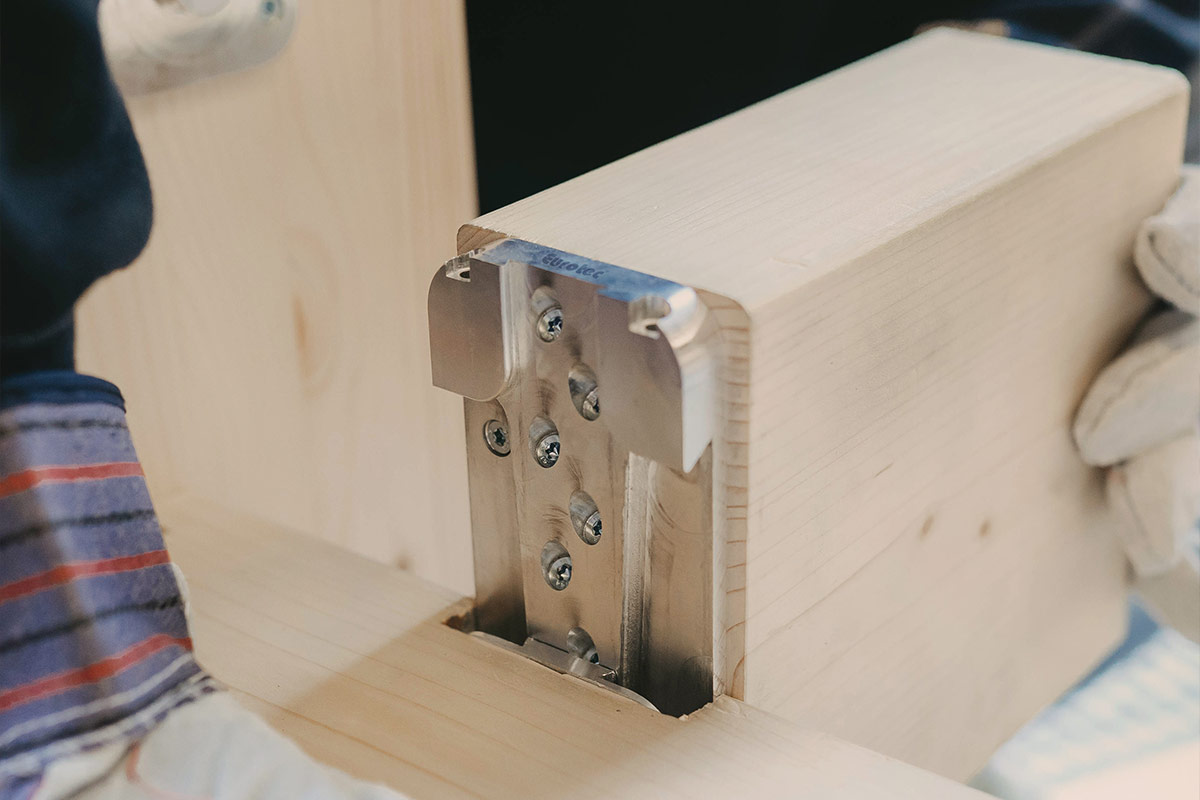
Depending on the application, the Magnus hook connector can be mounted either on or in the wooden beams. To create a concealed connection between main beam and secondary beam, however, a routed slot is needed. This can be created easily with the special milling jig and a groove-milling cutter from Eurotec.
The hook connector offers multiple options in wood construction. It is used in the construction of carports and terrace roofs, for example, in addition to high-strength structural wood connections. The connector is available in various sizes and can therefore be used in a great number of applications. As wooden beams have individual sizes, Eurotec provides the connector in four basic sizes XS–L, each with various subsizes.
An installed Magnus hook connector has a service life of at least 50 years. For this to be ensured, the product must be used correctly. Furthermore, the connector can be used in service classes 1 and 2 to EN 1995-1-1:2010 (Eurocode 5).
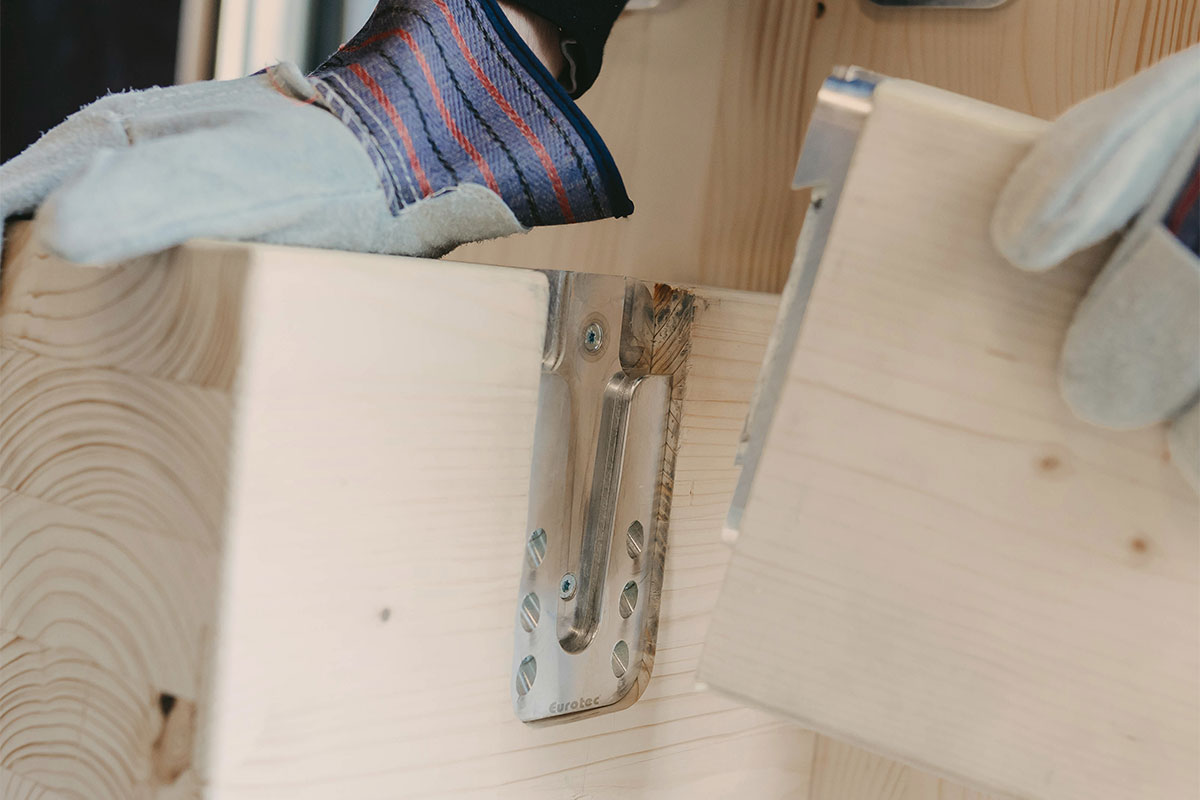
Another type of connection that is not visible to the naked eye when installed is the T-Tec system connection. This system is made up of the T-profile wood connector and the self-tapping EST rod dowel, Ø 7.5 mm. The combination of these two products creates load-bearing connections of wood on concrete and wood on wood. This creates another ideal basis for multiple wood connections. The T-Tec system can be used to position connections horizontally and at an angle in a way that is secure and capable of holding loads. What’s more, due to its double-threaded screw and the arrow drill, the EST rod dowel can be easily screwed through the timber and aluminium of the T-profile without any need for pre-drilling.
The apparent density must not exceed 460 kg/m³. If there is no cladding protection, the connector is subject to use in the service classes 1 and 2 and the corresponding requirements to EN 1995-1-1.
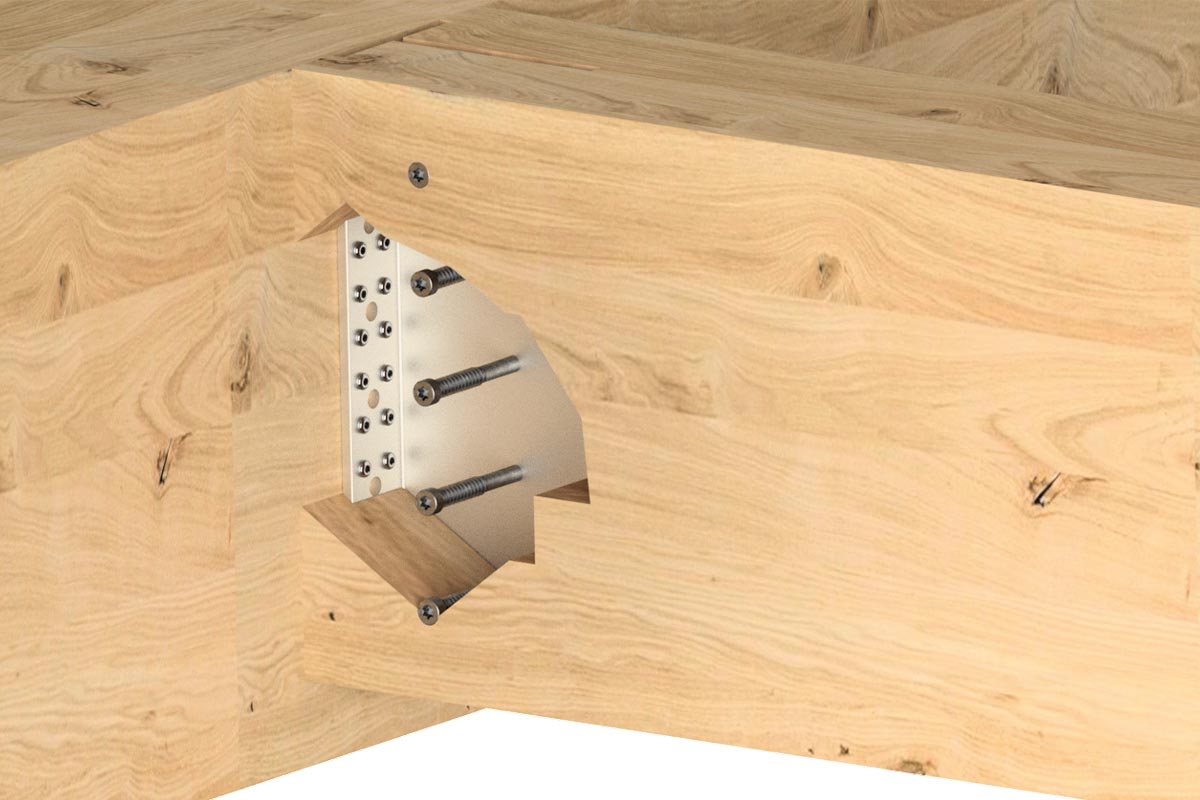
The T-Tec system has recently been certified to ETA-21/0710. The certification is only valid for joint use of the T-profile and EST rod dowel, so the stated forces and technical data can only be complied with if both system components are used.
With the growing challenges and the rapid development of the powerful construction material, the company wants to give greater prominence to “building with wood” and work with customers to shape the sector. Using wood should be further promoted in public and in private applications – Eurotec supports the realisation of projects with innovative products and solutions.
You will find more information about products for timber engineering on our website.
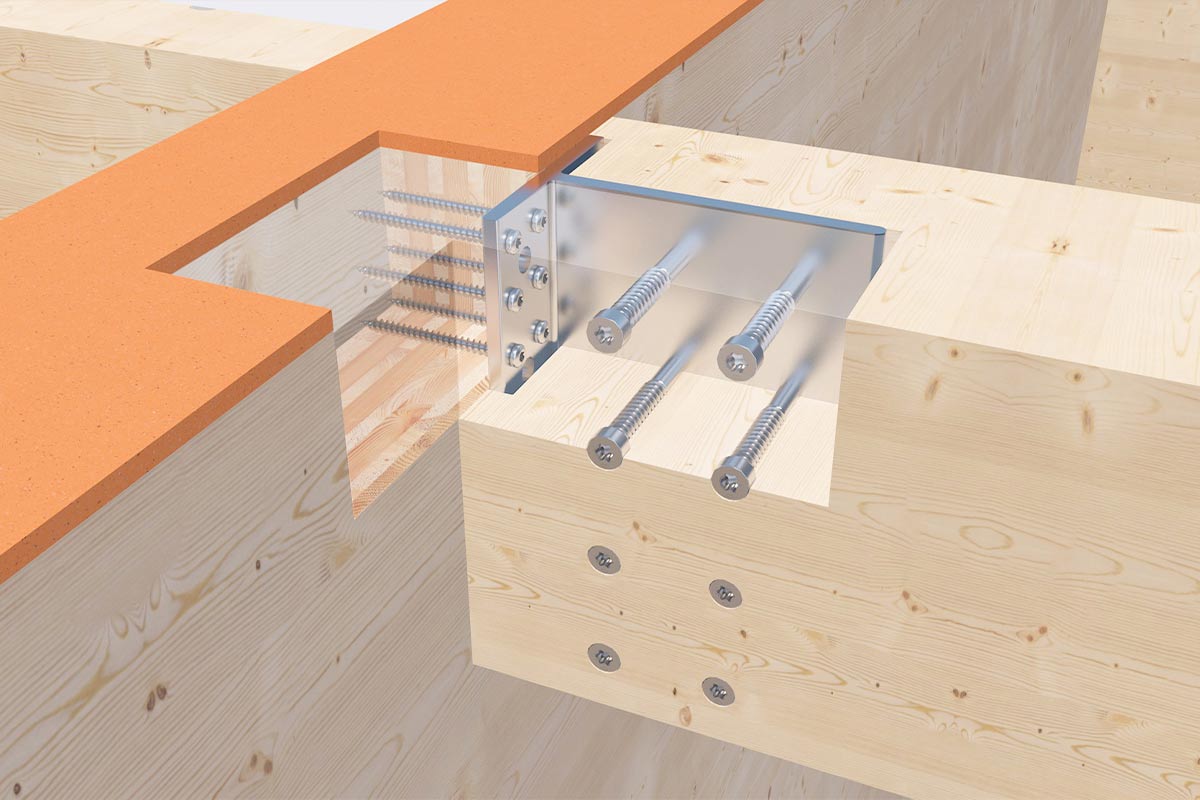

Media library
You will find all product presentations and application videos in our media library. How do I build a substructure? Is it possible to fix terrace decking in a non-visible way? And if so, how? Answers to these questions and much more can be found in our informative videos.
Other news
Here you will find information and news about Eurotec.
Discover new catalogues, products or other topics.
-
News
Do you always want to be up to date? In our news section you will get an exclusive insight into our company. Read it now!
saperne di più -
About us
Get to know us! At Eurotec, we offer our customers a broad product portfolio and many years of experience.
saperne di più -
Contact
If you require further details, please call us on +49 2331 6245-0 or send us an email. We are happy to help!
saperne di più



 Deutsch
Deutsch  English
English  Dansk
Dansk  Español
Español  Italiano
Italiano  Français
Français  русский
русский  Polski
Polski 